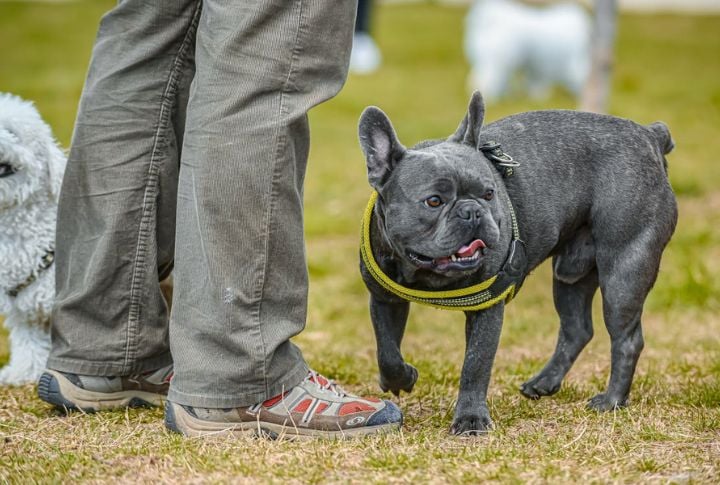15 Common Criticisms of Cesar Millan’s Dog Training Philosophy

Training a dog will shape its behavior while deepening the bond of companionship. It’s a process filled with rewards for both you and your dog. While many admire Cesar Millan’s techniques, his approach often sparks concern among experts. Let’s look at where those methods raise red flags.
Overemphasis On Dominance Theory

Framing dogs as pack-driven creatures locked in a constant struggle for dominance oversimplifies their behavior. Research-based training relies on motivation and trust, not rank enforcement. Heavy reliance on dominance models often creates distress instead of respect. A dog doesn’t want to challenge your status; it’s asking for clarity.
Frequent Use Of Physical Corrections

Corrections like leash jerks or forced posture changes may suppress behavior momentarily, but they rarely teach long-term comprehension. These tactics often increase stress responses instead of reducing them. Dogs trained with patience and positive reinforcement build long-term habits because they’re learning, not bracing for punishment.
Misinterpreting Aggression As Defiance

Standing at the edge of a fenced yard, a reactive dog lunges, hackles raised. Millan might label it disobedience. Behaviorists look deeper: fear, pain, trauma. Reactivity isn’t rebellion alone; it’s communication. Address the cause rather than punishing, as the reaction leads to steady improvement without escalated fear.
Minimal Emphasis On Canine Body Language

Posture or ear tilt are among the various ways dogs speak without barking, besides using their tails. If you downplay this silent language, you overlook essential cues that steer responsible responses. Recognizing signals like yawns or lip licking helps prevent escalation. When you learn to read the signs, your dog learns to trust you.
Promoting Calm Submission As The Goal

Submission isn’t the same as security. A dog lying still may be shut down, not soothed. Targeting the ‘calm’ behavior without addressing emotional wellness creates a dog that complies out of fear. Curiosity is a sign of a stable dog, not just quiet. Confidence, not compliance, is the truest sign of progress with dog education.
Overgeneralizing Behavior Across Breeds

Different breeds carry distinct instincts and energy levels shaped by generations of purpose-driven breeding. Applying the same correction-heavy methods to a Border Collie and a Shih Tzu dismisses what makes each tick. Understanding breed-specific drives helps shape instructions that fit your dog’s actual needs.
Ignoring Emotional Recovery Time

After a correction, Millan often expects instant compliance. But dogs, like people, need decompression. A nervous pup can’t process cues under stress. Respecting recovery time protects the dog’s emotional safety and strengthens future engagement. Rushing through distress just teaches the dog that its education equals anxiety.
Using Intimidation To Achieve Obedience

Can fear ever replace understanding in training? Techniques that rely on looming posture or prolonged eye contact often silence dogs, but they don’t inspire trust. Dogs under pressure learn to avoid, not to acknowledge. Instructions rooted in safety and trust help them learn clearly and cooperate without shutting down.
Treating Behavior As Something To Correct

When a dog jumps, barks, or paces, it’s not misbehaving—it’s communicating. Labeling these actions as problems overlooks the real question: Why is this happening? Effective training starts with observation, not correction. The goal isn’t to stop a dog from acting out but to understand what it’s trying to express. Good trainers don’t punish; they interpret and guide, creating calm through empathy.
Misrepresenting Balanced Training

Some trainers define balanced training as a mix of treats and tugs, but many experts argue that this framing misses the point. Dogs deserve some level of care with their learning pace. A well-rounded education considers the time it takes and emotional safety with the adjustments in patience with purpose.
Limiting Client Education And Involvement

What happens when the trainer leaves, and you’re left guessing? Owners need more than a demonstration; they need guidance and the confidence to reinforce progress at home. When professionals act as the only solution, they limit the owner’s growth and the dog’s ability to adapt.
Framing Fearful Dogs As Stubborn

Labeling a fearful dog as “stubborn” shuts down the conversation before it starts. A trembling pup isn’t disobedient; it’s just overwhelmed. Behavior experts recognize that hesitation often stems from past trauma or poor socialization. Instructions with patience and consistency help fearful dogs blossom instead of shutting them down.
Using Flooding As A Behavior Strategy

If a dog is thrown into its biggest fear, like forcing it near traffic or strangers, it can backfire. Known as flooding, this method overwhelms the nervous system. While it may seem like desensitization, true behavior change requires little and manageable exposures. Gradual steps, not shock tactics, build genuine confidence over time.
Prioritizing Visual Drama Over Reality

Television shows may show you fast results and dramatic transformations, but real-life training rarely fits into a single episode. Quiet improvements like a softer gaze or fewer stress signals matter just as much. Don’t rush changes to meet on-screen-like demands. It risks missing key signs of discomfort. Sustainable progress isn’t always flashy.
Disregarding Veterinary Collaboration In Training Plans

Could underlying pain be the reason your dog snapped? Thyroid imbalance or sensory decline may trigger sudden aggression or withdrawal. Before addressing behavior through training, expert trainers collaborate with vets to ensure no physical conditions are at play. The most effective approach begins by confirming your dog’s health.






